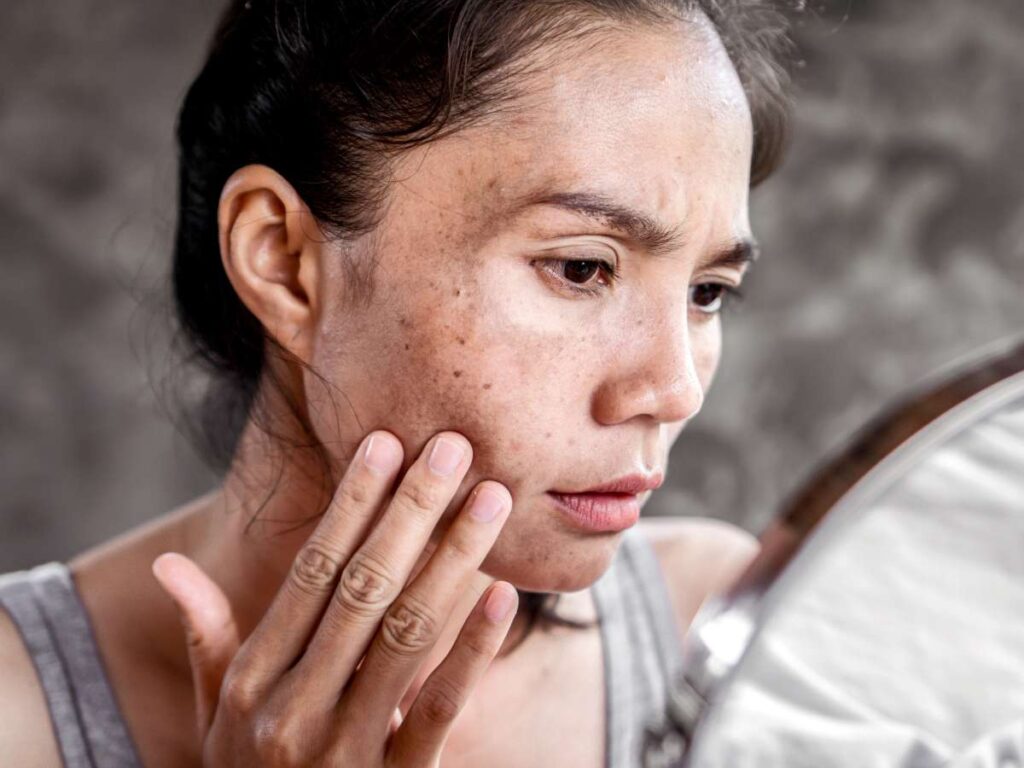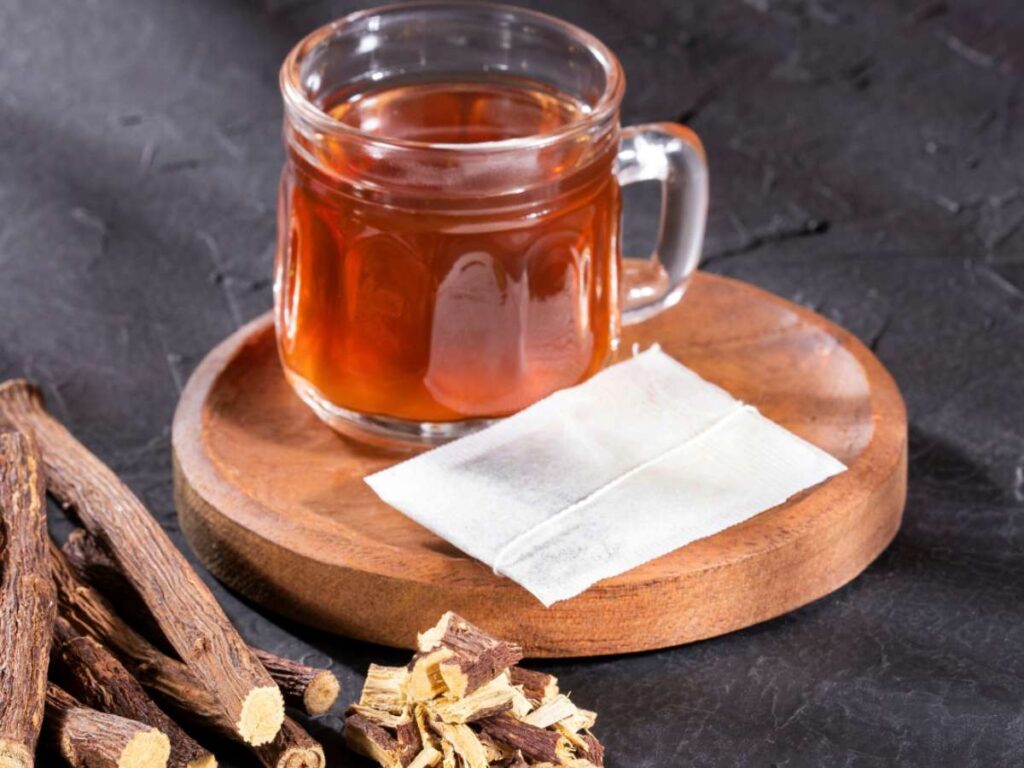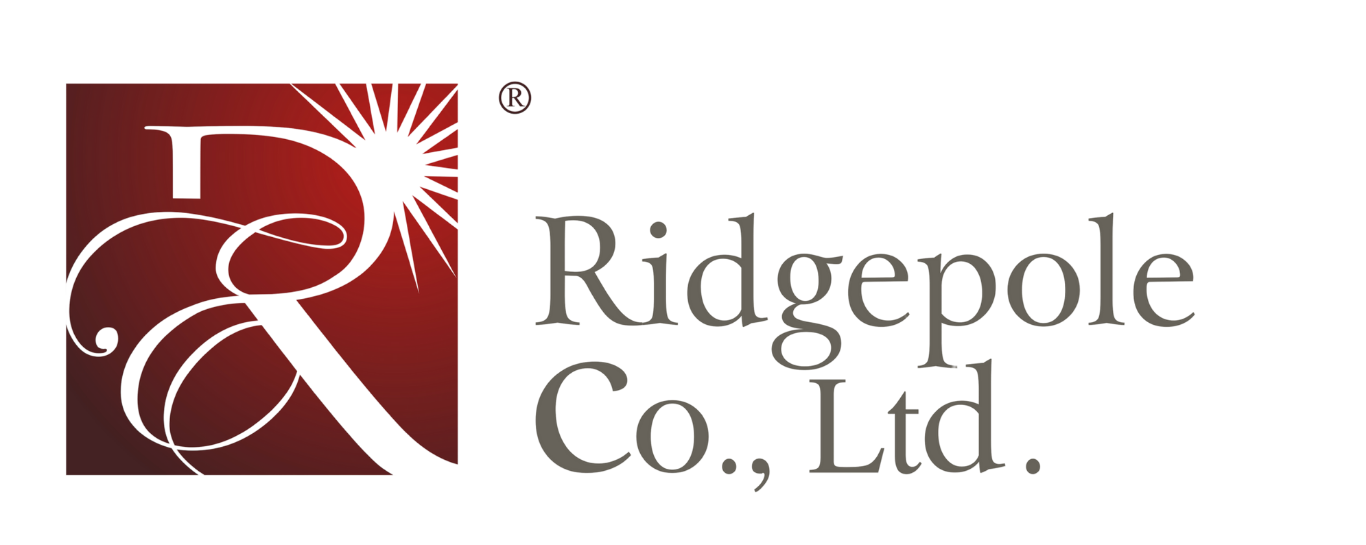How To Use Licorice Root Extract To Improve Hyperpigmentation

Author: Tommy Tang | Founder at Ridgepole
Hi, I'm Tommy Tang, here to share my expertise in skincare with you.
Table of Contents
When I first evaluated licorice root extract for hyperpigmentation treatments, I assumed it would be another overhyped natural ingredient. But after running formulation tests, the data showed consistent brightening effects.
That led me to explore its broader applications in commercial skincare. Could this ingredient provide a scalable, effective solution for businesses?
Licorice root extract is backed by clinical research and has been successfully integrated into high-end formulations. Its ability to inhibit melanin production makes it a strong ingredient for professional-grade skincare solutions.
In this article, we’ll cover how licorice root extract works, how to incorporate it into formulations, and critical factors to consider in production. You’ll leave with practical insights that align with industry needs.
Let’s begin!
1. What Is Licorice Root Extract?
I first heard about licorice root extract while researching gentle brightening ingredients. Unlike harsh treatments like hydroquinone or strong acids, licorice root is known for its ability to fade dark spots naturally without causing irritation.
I started using a serum containing licorice root extract every night, and within a few weeks, I noticed my dark spots slowly fading. My skin looked brighter and more even without dryness or redness—a common issue I had with other treatments.
What Makes Licorice Root Extract So Effective for Hyperpigmentation?
Licorice root extract is packed with powerful compounds that specifically target dark spots and discoloration:
- Glabridin: A natural skin-brightening agent that inhibits melanin production, preventing new dark spots.
- Licochalcone A: Helps reduce redness and irritation, making it ideal for sensitive skin.
- Flavonoids & Antioxidants: Protect the skin from free radicals and environmental damage.
Results After 6 Weeks
- Dark spots from old acne scars visibly faded
- Skin tone looked brighter and more even
- No irritation, peeling, or dryness like I had with other brightening treatments
2. How Licorice Root Extract Helps with Hyperpigmentation
Licorice root extract is a natural solution for reducing dark spots and evening out skin tone. It targets hyperpigmentation at its source, making it a popular choice in brightening skincare products. This is how it works:
Inhibits Melanin Production
Hyperpigmentation happens when excess melanin is produced due to UV exposure, acne, or hormonal changes. Licorice root’s glabridin compound blocks tyrosinase, the enzyme responsible for melanin production. This means fewer new dark spots forming and a gradual fading of existing ones.
Fades Dark Spots and Scars
Licorice root extract effectively lightens:
- Post-inflammatory hyperpigmentation (PIH) – Dark marks left behind by acne or skin irritation.
- Melasma – Hormonal pigmentation, often appearing as patches on the face.
- Sunspots – Darkened areas caused by prolonged UV exposure.

Reduces Inflammation That Worsens Pigmentation
One thing I’ve noticed is that irritation often makes hyperpigmentation worse. Licochalcone A in licorice root calms inflammation and reduces redness, making it an ideal solution for those with sensitive, acne-prone, or reactive skin.
Provides Antioxidant Protection
Hyperpigmentation isn’t just caused by UV damage—pollution and oxidative stress also play a role. Licorice root extract contains powerful antioxidants that help shield the skin, preventing further pigmentation issues over time.
3. Best Practices for Licorice Root Extract for Hyperpigmentation
Licorice root extract is a natural skin-lightening agent widely used in cosmetic formulations for treating hyperpigmentation. It contains glabridin, an active compound that inhibits tyrosinase, the enzyme responsible for melanin production. Here’s how licorice root extract can optimize its use in skincare products:
Formulating with the Right Concentration
The recommended concentration of licorice root extract for hyperpigmentation ranges between 0.5% and 2%. A concentration below 0.5% may be ineffective, while exceeding 2% can cause skin irritation or instability in formulations. Using standardized extracts with a high glabridin content enhances efficacy without compromising safety. Cosmetic brands should conduct stability and efficacy tests to determine the optimal dosage for their formulations.
Pairing with Synergistic Ingredients
Licorice extract works best when combined with other skin-brightening agents that enhance its depigmenting effects. Niacinamide improves skin barrier function, while Vitamin C provides antioxidant protection and boosts collagen synthesis. Ingredients like kojic acid and arbutin further inhibit melanin production, making the formulation more effective.
Using Water-Soluble Extracts
Licorice root extract is available in oil-soluble and water-soluble forms, each suitable for different product types. Oil-soluble extracts work well in creams, facial oils, and serums, allowing deeper penetration into the skin barrier. Water-soluble versions are ideal for toners, essences, and lightweight gels, offering quick absorption and a refreshing application.

4. Common Mistakes to Avoid While Using Licorice Root Extract
Licorice root extract is a widely used ingredient in skincare formulations for its ability to improve hyperpigmentation. However, improper use can result in reduced efficacy or skin irritation of your customers. Below are common mistakes to avoid:
Ignoring Glycyrrhizin Levels
Licorice root extract contains glycyrrhizin, which can lead to hypertension, potassium depletion, and edema if used excessively. Failing to monitor glycyrrhizin content can make products unsafe for consumers. Consider deglycyrrhizinated licorice (DGL) for formulations requiring long-term use.
Not Complying with Regulatory Standards
Different countries impose strict limits on licorice root extract usage. For example, the FDA, EFSA, and other regulatory bodies set specific thresholds for glycyrrhizin in food and supplements. Non-compliance can lead to product recalls, penalties, or market restrictions.
Using Incorrect Extraction Methods
Licorice root extract is processed using solvent extraction, water extraction, or CO₂ extraction. Choosing the wrong method affects purity, concentration, and application suitability. Water-extracted licorice is safer for food and beverages, while solvent-extracted versions may contain residual solvents.
Neglecting Stability in Formulations
Licorice root extract is sensitive to pH, light, and oxidation. Failing to account for these factors can cause degradation, reducing potency and shelf life. Proper storage conditions, stabilizers, and encapsulation techniques can help maintain efficacy.
Incorrect Dosage in Functional Products
Overuse can lead to toxicity, while underuse reduces intended benefits. Precise formulation is essential in herbal supplements, functional beverages, and cosmetics to maintain both effectiveness and safety.
5. Best Tips for Maximizing Results of Using Licorice Root Extract
Licorice root extract is a powerful natural ingredient for hyperpigmentation treatment. However, to achieve optimal results, skincare brands and manufacturers must consider formulation stability, ingredient synergy, and proper application. Below are the best tips to enhance the effectiveness of licorice root extract in cosmetic formulations:
Tip #1: Use Standardized Extracts
Not all licorice root extracts are equally effective—glabridin, the primary compound responsible for skin brightening, varies across different extracts. Choosing a standardized extract with a high concentration of glabridin (at least 10-40%) ensures superior efficacy in hyperpigmentation treatments. Working with reliable suppliers that provide quality certifications can guarantee consistency and potency.
Tip #2 Pair with Ingredients That Boost Absorption
To maximize results, licorice extract should be combined with synergistic ingredients that enhance its penetration and brightening effects. Here are some:
- Vitamin C, niacinamide, and kojic acid work together to inhibit melanin production.
- Alpha-hydroxy acids (AHAs) improve absorption by gently exfoliating the skin.
- Hyaluronic acid and ceramides help maintain skin hydration, ensuring that licorice extract does not cause dryness or irritation.
Tip #3 Optimize pH Levels for Maximum Stability
Licorice extract is most effective in formulations with a pH range of 4.5 to 6.0. A pH that is too low can lead to skin irritation, while a pH that is too high may reduce its bioavailability. Conducting stability testing ensures that the extract remains active throughout the product’s shelf life. Proper formulation adjustments can also prevent oxidation and degradation.
Tip #4 Ensure Proper Storage and Packaging to Maintain Potency
Exposure to light, air, and heat can degrade licorice extract over time, reducing its effectiveness. Using airtight, UV-protected packaging extends its shelf life and maintains potency. Storing formulations in cool, dark environments further prevents oxidation, ensuring that the active compounds remain stable.
Conclusion
Licorice root extract is a proven solution for addressing hyperpigmentation and improving skin tone. If your customers are seeking effective solutions for dark spots, incorporating this ingredient into your products can drive results and customer satisfaction.
And if you’re looking for a dependable skincare manufacturing partner, Ridgepole offers customized solutions across skincare, body care, lip care, hair care, oral care, men’s care, and more.
Do you want to create a product that truly transforms skin? Let’s make it happen.
Contact us today, and let’s craft skincare solutions that make a difference!
Dive Deeper Into Our Resources
For some insightful reads, we’ve curated a list of recommended articles just for you:
Still haven’t found what you’re looking for? Don’t hesitate to contact us. We’re available around the clock to assist you.
Quick Quote
Own Your Private Label Cosmetic Line Is No Longer Difficult Here!





